Spiders and Harvestmen
Arachnids differ from insects in that they all have four pairs of legs and no antennea. Although they all have two body segments these are only obvious in spiders; harvestmen appear to have only a single segment. Britain does not have any spiders that are poisonous to man, although a few can give a small bite and may cause an allergic reation in some people.
Garden Spider
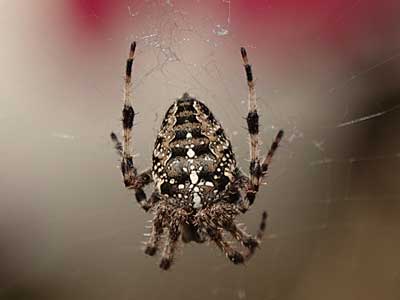
Also known as the Cross Orb-weaver for the cross marking on its back. this is the spider most likely to spin large webs in gardens and parks.
Cucumber Green Orb-weaver

A smaller spider that also spins an orb web to catch its prey. There are two very similar species.
Long-jawed Orb-weaver
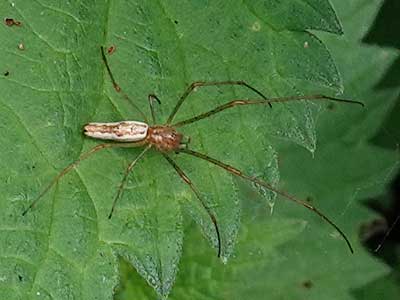
These spiders are found in low vegetation, usually near water, and vary in colour from brown to green.
Labyrith Spider
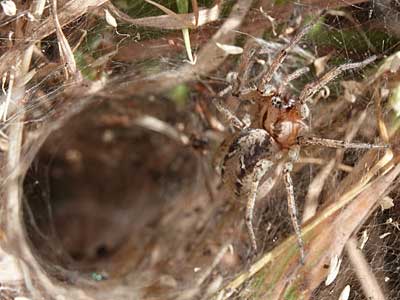
These spiders produce a sheet web just above long grass. The funnel shaped opening leads to a labyrinth and the nest where the female raises her young.
Crab Spider

The crab spider, named for the long pairs of front legs lies in wait and pounces on its prey. They sometimes have pink stripes on the body.
Zebra Spider

One of several jumping spiders that stalk and pounce on their prey, sometimes jumping over 14 times its own body length. Often found in gardens.
Wasp Spider
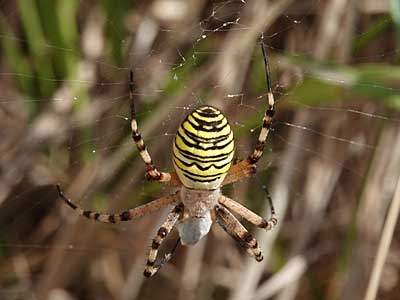
This large colourful spider mimics a wasp to ward off predators. A recent arrival from the continent, it is spreading over the South of England.
Harvestman
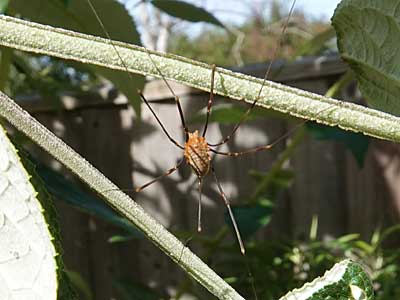
Harvestmen are a group of about 25 arachnids that differ from spiders in that the body appears to be a single un-jointed structure. Most of them also have extremely long legs.